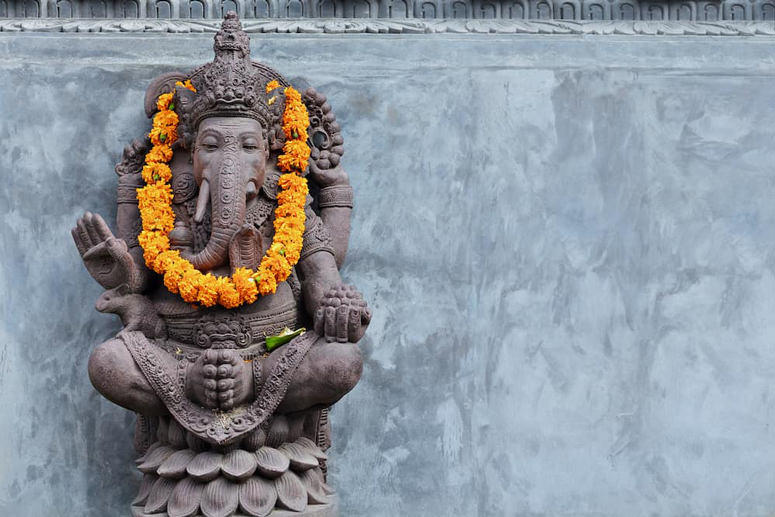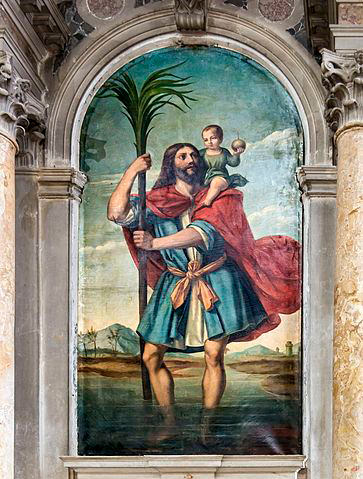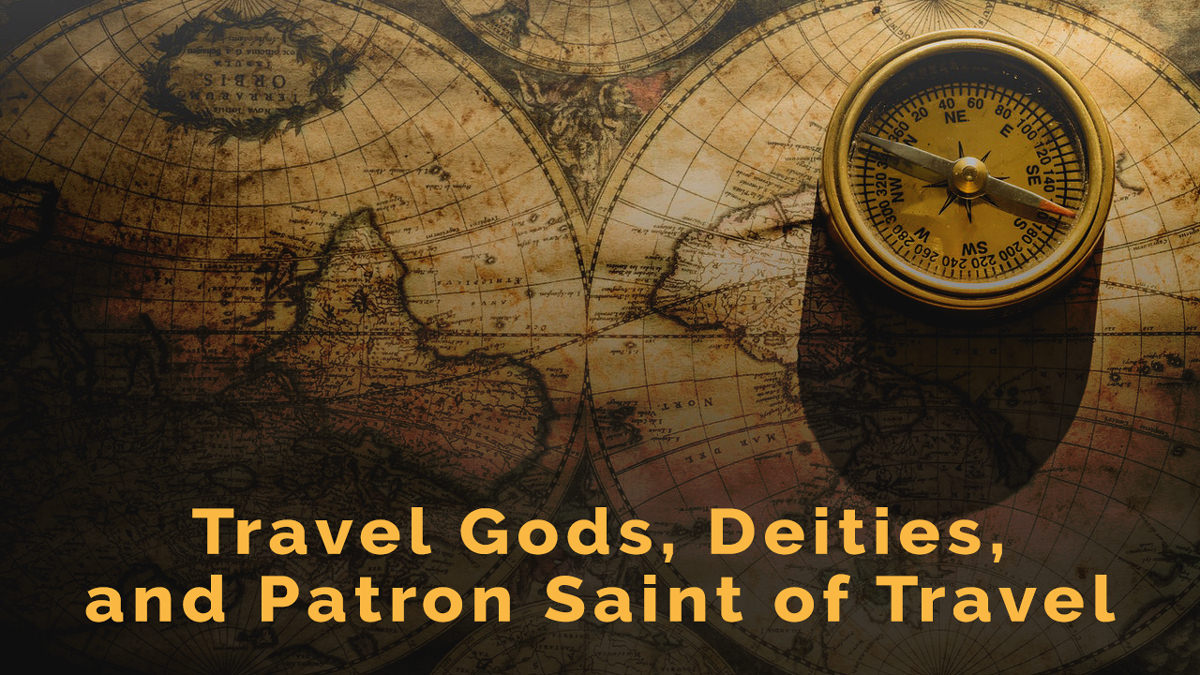Did you ever wonder how ancient people had the guts to travel the vast open seas? And how do some people overcome their fear of flying the skies or sailing the ocean?
I’ll tell you one idea.
They prayed or asked for protection. But to whom?
Traveling helped our lives a lot in different aspects. Some for pleasure, others for trade and business, while certain people had missions or goals.
Before embarking into a journey, people need to have a sense of security to be able to go on. To be able to get that, we pray to the saints or appease gods to protect us wherever we go.
The world is full of different people and every place has their own legend, belief, or faith. Let’s take a look at some of the travel gods, deities and saints that people prayed to or have asked for a safe journey.
Here’s a List of the Travel Gods, Deities, and the Patron Saints of Travel
Abeona and Adiona
I put these two Roman travel goddesses in one slot because they were often linked with each other. Abeona was the goddess that protected children when they go out while Adiona accompanied them on their way home. What a solid combination, right? You can bet these two deities really liked to take care of kids.
Baal
Baal, in Phoenician mythology was called Baal Shamen, Lord of the Heavens. He was the primary god in charge of weather, nature, and the heavens. Yes, the Earth itself. The ancient people asked for good weather and rewards by offering their finest goods and prayed to him.
Chammo Lam Lha
Another travel deity, named Chammo Lam Lha, was a Tibetan goddess who was worshipped by people seeking a peaceful travel. She is often depicted by being surrounded by 20 emanations of herself while riding on the back of a queen bee. Travelers wanting Chammo Lam Lha’s protection on their journey offered her smoke and torma.
Chimata-no-Kami
The birth story of Chimata-no-Kami goes like this. While the Shinto god named Izanagi fled from the underworld, he was chased by Thunder gods, so he threw a stick in their path, which gave birth to Chimata-no-Kami, the god of the road, to seal the entrance of the underworld. Chimata-no-Kami was then known as protector of the paths. If you like to take the road less-traveled, then you might want her help.
Dōsojin
Have you seen the movie Spirited Away? If not, I recommend you watch it. It’s awesome and because Dōsojin, a Japanese deity was featured in the movie.
This travel deity was associated with crossroads, village entrances, and mountain passes. Stones carved with human couples is a depiction of Dōsojin that are still found in Japan today.
Fortuna Redux
There are many versions of the Roman goddess Fortuna and one of them was Fortuna Redux. She was generally described as the power that guarded the return of the emperor from dangerous foreign journeys.
Ganesh
Ganesh, also called Ganapati, is a Hindu god of beginnings and remover of obstacles. He removes obstacles on one’s path. A 10-day festival called Ganesh Chaturthi, is celebrated for him between the month of August to September.
You can find a lot of temples dedicated to Ganesh. Some examples are Kanipakam Vinayaka Temple,Manakula Vinayaka Temple, Madhur Mahaganapathi Temple, Ranthambore Ganesh Temple, Rockfort Ucchi Pillayar Koil Temple, Karpaga Vinayagar Temple, SasiveKalu Ganesha Temple, and the Shree Vinayaka Devaru temple.

Hasamelis
Hasamelis was a god to the Hittites, also known as Ancient Anatolian. They are now the modern the people of Turkey. The Hittites believed that Hasaemlis protects travelers by making them invisible.
Hecate
This Greek goddess of travel was depicted with 3 bodies. These bodies held torches while looking at three different ways, assumptively, so she could see in all directions. Hecate saw the abduction of Persephone, the Greek goddess of vegetation, so she helped Demeter, the Greek goddess of harvest, search for her. Pillars called Hecataeus were then seen on crossroads and doorways to drive the evil away. Hecate was one of the early gods known by the Greeks.
Hermes
Hermes is one of the most widely known travel god. He was the god of commerce, luck, patron of travelers, thieves, merchants, champion of athletes and athletic competitions. Wow, that’s many. His main task was being a messenger to the gods like his Roman god counterpart, Mercury. Since he was a messenger, he became the god of the roads, doorways and protected the travelers. But of course, just like Mercury, he too was also a trickster. Looks like he has the good and the bad.
Ilmarinen
Ilmarinen was a Finno-Ugric deity. The Finno-Ugric religion flourished in northern Scandinavia, Siberia, the Baltic area, and central Europe. Those who followed this religion believed that Ilmarinen was a creator deity and a god that controls the weather. According to Agricola, founder of the Finnish literary language, Ilmarinen aided travelers on their journey.
Janus
Have you seen pictures of a two-faced statue? Or have you personally seen one? Most of these statues are depictions of the Roman god Janus. The romans regarded him as the god of doorways, beginnings, and transitions. During the times of war, the soldiers would exit the city through a door of Janus. It was important that they do it in a correct manner so that Janus would protect them. If they didn’t, they will be doomed. Yikes.
One of the most important structures built for him is a shrine called Janus Geminus.You can find it near the Argiletum entrance to the Roman Forum.
Jizo
Jizo is a Buddhist deity that protects the children. Other than that, he also protects travelers, that’s why you will find a lot of the deity’s statues are seen in mountain pathways, crossroads, borders of villages and some corners of the cities as well. It is a tradition derived from the ancient belief of the Dōsojin. You will Jizo statues look likes small statues of children or a small Buddha with a red cloth in Japan.
Khonsu
If the romans had the goddess Luna, the Egyptians worshipped Khonsu as their moon god and the Egyptian god of travel. The scholars debated over the meaning of his name, but they mostly believed that it means to cross or to travel.
Khonsu was the child of Amun and Mut. Aside from being the moon god, he was also associated with being the god of love and fertility.
Meili
There wasn’t enough information found about the Norse god Meili. One article indicated that the meaning of his name means mile-stepper, which could be a possible reason he was regarded as a god of travel. He was also known as the lovely one and Thor’s brother. That makes him a son of Odin.
Mercury
Mercury is the roman counterpart of the god Hermes andone of the most famous deities associated with traveling. He was the god of commerce, communication and travel. He protected merchants and travelers but was known as a deceiver and a trickster as well.
Mercury was described wearing a winged helm and winged shoes. He also had a Caduceus. It’s a wand with serpents wrapped around it. Aside from that, Mercury also had other duties like being a messenger of the gods. His winged shoes helped him deliver the messages quickly. So much for being a travel god.
Neptune
Did you ever wonder how it feels to control the waves in the ocean? Well, the Romans thought this deity certainly knew.
Neptune was the god of water and the seas. He also summoned winds and storms. The Romans believed that he controlled the smallest up to the largest bodies of water, so they appeased him for a safe travel on the seas. Seek the one who controls, right?
He was depicted by riding a chariot pulled by horses that were sometimes illustrated with fish-like bodies and fins. By the way, Neptune was also the god of horses and horsemanship. Lastly, he carried a mighty trident just like Poseidon, his Greek counterpart. Neptune’s festival called Neptunalia is every July 23rd.
Nino de Atocha
Nino de Atocha was described as a young boy around twelve years of age wearing a brimmed hat and a cloak.
Stories say that a young male visited the imprisoned of the Moors, as he carried food and water without being seen by the Moor guards in the town of Atocha, Spain. Another one was when travelers and in-keepers saw a young child with the same description, pointed them to a safe route so they can avoid the danger of being seen by the Moors.
Because of these stories, the unknown child received the name of the Holy Infant of Our Lady of Atocha. Furthermore, Nino de Atocha was known to be a patron saint of travelers and the imprisoned.
Portunus
If Neptune controlled the waters, this travel god named Portunus watched over the harbors and keys. He provided safe passage to sailors traversing the seas. He also guarded livestock and doors.
If you ever want to visit the temple of Portunus, go to Forum Boarium in Rome. Entrance fee is for free. Great! The temple is said to be well preserved. And that’s amazing. The Romans would be proud. A festival called Portunalia was celebrated in honor of Portunus every August 17th.
St. Brendan
St. Brendan was also known as Brendan the Voyager, or Brendan the Navigator. As a traveler, he explored around Scotland and sailed the Atlantic Ocean. According to a book called Voyage of St. Brendan, the Abbot or most known as Navigatio Sancti Brendani Abbatis, St. Brendan made a journey with the monks to the Promised Land of the Saints and reached it.
St. Christopher
For Catholics, Saint Christopher is widely known as the patron saint of travelers. His existence is questionable to many but still, he’s one of the most popular saints. The legend says that he devoted his life helping travelers by carrying them across a river.

St. Raphael the Archangel
Raphael the Archangel is also known as a patron saint of travelers, the blind, doctors, nurses, and health workers. He once disguised himself as a human and aided a person named Tobiah along his journey. His festival day is every September 29th, same with St. Michael and St. Gabriel.
Xaman Ek
Xaman Ek was a Mayan god described as the protector of merchants. They offered incense to appease him at his altars along the roadsides.

